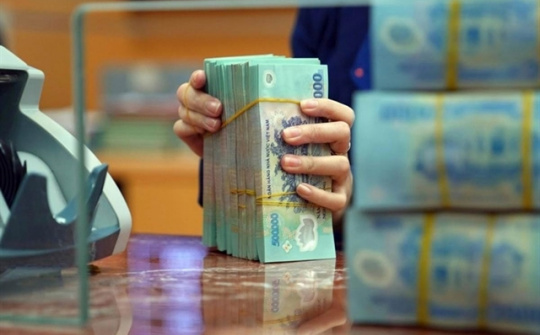According to data shared by the State Bank of Vietnam (SBV) at last week’s National Assembly (NA) meeting, credit growth reached 9 per cent in the year-to-date and 16 per cent on-year by the end of Q3. Credit growth in the real estate sector surpassed overall credit growth, reaching 9.15 per cent since the beginning of the year.

Lowered lending rates to facilitate capital access
SBV Governor Nguyen Thi Hong addressed key issues regarding lending rates and social housing credit. Responding to delegates’ concerns about high interest rates, the governor noted that, despite soaring international rates, Vietnam’s lending rates have been effectively controlled, with new rates approximately 3 per cent lower than at the end of 2022.
“When businesses and citizens face hardships, credit institutions allocate their financial resources to provide interest waivers and reductions, totalling about $2.5 billion, a considerable amount,” Governor Hong stated. “The SBV consistently directs credit institutions to optimise operational costs to further reduce lending rates, support businesses and individuals, and streamline loan procedures to save time and resources.”
As of October 23, the overnight interbank rate stood at 3.75 per cent, lower than the mid-year peak of over 5 per cent. Experts believe that while exchange rate management may exert pressure on interest rates, there remains room to lower lending rates to support the economy through the year-end period.
Regarding further rate reductions, Nguyen Hung, CEO of TPBank, observed that lending rates have decreased and held steady at lower levels since the start of the year. With ongoing efforts to cut costs and reduce profits, a further reduction of 0.5–1 per cent may be possible. “If the SBV maintains ample liquidity and low operating rates, market rates will trend downward, allowing room to reduce lending rates,” Hung said.
According to the Vietnam Association of Realtors (VARS), the real estate market is poised to heat up in the final quarter as new regulatory frameworks take effect, enabling developers to expedite project rollouts. The premium apartment segment remains strong, while demand for villas, town houses, clean-titled land, and social housing is expected to rise due to supportive policies.
“The social housing market will see a significant uptick in demand in Q4, with new regulations facilitating access for buyers. Supply will improve across regions but remain constrained in major cities like Hanoi and Ho Chi Minh City,” said VARS chairman Nguyen Van Dinh.
Last week, HDBank became the ninth bank to join the social housing credit programme, adding to the commitments from the big four state-owned banks of Agribank, Vietcombank, BIDV, and VietinBank, each pledging $1.25 billion, alongside commercial banks such as MB, VPBank, Techcombank, TPBank, and HDBank with $208 million each.
With HDBank’s inclusion, the total pledged funds for social housing credit now stand at just over $6 billion. However, disbursement progress has been slow due to project- and borrower-related challenges.
In the latest Ministry of Construction (MoC) report to the NA, only half of the nation’s provinces have listed eligible social housing projects. Of these, just 15 projects have secured credit agreements, with committed credit of $175 million but only $67.7 million in actual outstanding loans.
The MoC has proposed extending preferential loan terms, lowering interest rates, and urging local governments to publish more eligible social housing projects. Additionally, it has recommended the SBV consider a separate credit quota for the programme, excluding social housing credit from banks’ overall limits.
Low-interest credit packages tailored for individuals, businesses, and household enterprises are being launched by banks ahead of the Lunar New Year to support economic activity amid ample liquidity and remaining credit room. Compared to the first half of the year, applicable rates for these programmes have dropped by 1–2 per cent per annum, and the SBV has proposed to the prime minister further reductions in preferential rates for home buyers.
At Agribank, interest rates on loans for housing, personal needs, and real estate are fixed at 6 per cent annually for the first six months, 6.5 per cent for the first 12 months for loans over three years, or 7 per cent for the first 24 months for loans with terms of at least five years.
Meanwhile, BIDV offers home loan rates starting at 5 per cent per annum fixed for the first six months with a 36-month term or 5.5 per cent for the first 12 months with a 60-month term. Post-promotion rates are variable with a 3.5 per cent per annum margin.
In October, Sacombank introduced a $625 million short-term credit package for individual and business clients. Businesses enjoy a 4.5 per cent annual rate, while individual borrowers are eligible for rates as low as 5.5 per cent on production and business loans with terms up to three months.
Similarly, SeABank has offered $208.33 million at rates starting from 4.5 per cent per annum for those seeking additional business capital for three-month terms, or 6.7 per cent for 12-month terms.
MB Bank is offering business production loans at 6.94 per cent, down from 7.88 per cent in 2023. CEO Luu Trung Thai said, “In Q4, MB will continue to implement preferential credit programmes for high-credit-rating, viable business clients to support economic growth. We also prioritise stringent credit quality control and adhere to liquidity and risk management requirements.”




















